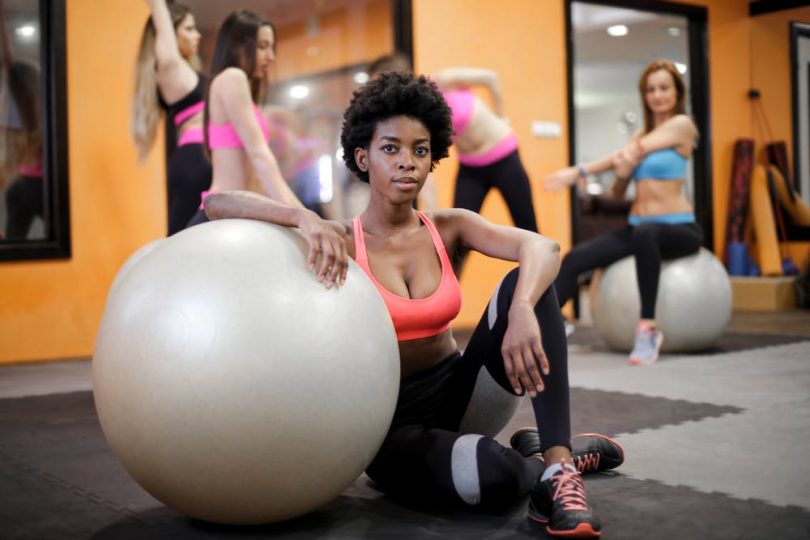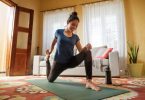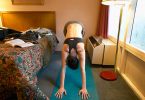The coronavirus pandemic has changed nearly every part of how we live our lives. Throughout the country, many students continue to learn remotely, masks are required in grocery stores, and basketball stars play in empty arenas. The gym has also changed in the wake of coronavirus. At the end of March, almost all the major gym chains had closed their doors in compliance with state mandates. As of the writing of this article, fitness centers in most states have opened back up, but members are in for a somewhat different experience. What are gyms doing to keep their members safe, and should you consider going back to the gym?
1. Different Rules for Different Gyms
The rate of coronavirus infections differs from state to state and even from county to county. These numbers also continue to change as certain states see their coronavirus cases decline while others deal with new flare-ups within their borders. This has led to a patchwork of different rules and recommendations depending on where a gym is located. If that isn’t confusing enough, large gym chains may also institute more demanding policies than what local laws require.
In short, there is no set of standardized safety rules for gyms. The way your gym operates will depend on the rules of your state, county, and city, plus the corporate policies of each gym. In this article, we’ll look at the most common ways gyms are keeping their members safe as the coronavirus continues. Note that not every gym may follow these policies, and some gyms may have more restrictive measures in place.
2. Lower Member Capacity
One of the biggest risk factors of coronavirus transmission is the gathering of large groups indoors. To lower this risk, many states have mandated that indoor businesses, like movie theaters, restaurants, and gyms, limit their capacity to 75 percent, 50 percent, or even 25 percent.
As a gym-goer, this will give you much more space in the gym and limit wait times for popular equipment (yay!), but it may also mean you’ll need to reserve your spot at the gym. In turn, spots in group fitness classes may also be harder to get. Check with your gym to see if reservations or time-limits are in place.

3. Social Distance Monitoring
No matter where you live, social distancing is the name of the game. Every gym should have a physical distancing policy in place, mandating that you make every effort to stay at least six feet away from anyone who doesn’t live in your household. Expect to see protective shields at the front desk, physical distance markings on the floor for group fitness classes, and having to keep the mandated six feet between clients and personal trainers. A staff member may ask you to maintain adequate distance if you are standing too close to others. Social distancing will help reduce the spread of coronavirus and will continue to practiced in gyms for long.
4. Cleaning Equipment and Hands
Good gym etiquette always meant cleaning your equipment after each use, but this is no longer about being polite to your fellow gym-goers. In the time of coronavirus, cleaning equipment is now a requirement at most gyms. You’ll likely see sanitizing wipes and cleaning stations set up throughout the gym. Now, you’ll be expected to clean your equipment after each use, including anything you touch, like dumbbells or plates. Certain difficult-to-clean equipment may not be available, like resistance bands, yoga mats, or foam rollers.
Your gym may also encourage you to wash or sanitize your hands regularly. Consider cleaning your hands upon arriving and before leaving the gym. Try not to put your hands near your mouth or eyes while at the gym.
5. Mask Mandates
Mask mandates vary depending on where you live. Some gyms may request or require that members wear masks, even if your state and city don’t require masks. Most gyms are currently requiring their employees to wear masks, so don’t be surprised if the front desk staff, personal trainers, and instructors at your gym are wearing a mask. Before you go to the gym, visit your gym’s website to read up on their mask policy. If a gym asks that their members wear masks and you don’t follow their rules, you may be asked to leave. Masks can be uncomfortable, especially during exercise, but growing evidence supports the effectiveness of masks to prevent the transmission of COVID-19. Currently, the CDC still recommends the use of face masks while in public.
Even if your gym does not require or request masks, you always have the choice to wear a mask to protect yourself. This may be a good idea if you are part of a population vulnerable to the coronavirus.
6. Home Workout Options
During the nationwide shutdown of fitness centers at the end of March 2020, many gyms scrambled to offer online content that members could use at home. This included live fitness classes, on-demand videos, and even specialized apps to track and encourage activity.
Even as most gyms across the country open their doors, not every member is ready to return. Gyms understand this, and most will continue to offer at-home content and support. If you aren’t ready to return to the gym, or simply can’t make it, check your gym’s website to see what online content they offer. You may be able to take a pre-recorded class at home, download an at-home workout, or even get home workout advice through their blog or app.
7. Other Changes You May Notice
In some areas of the country where coronavirus cases are low, going to the gym may feel almost normal. In other places, gyms may have implemented additional safeguards to protect members. Here are a few other common changes members may see at their gym:
• Temperature checks – Some gyms may perform temperature checks on members and employees and turn away anyone with a temperature.
• Closure of certain amenities and gathering areas – Some gyms have closed locker rooms, saunas, and employee break rooms to discourage people from gathering. Other gyms have not yet re-opened childcare areas. Check your gym’s website to determine which amenities may be closed.
• Directional traffic recommendations – To help maintain social distancing, some gyms may encourage one-directional traffic. Members may notice arrows on the floor, pointing in a single direction or signage requesting that members enter and leave the building by different doors. Try your best to follow these recommendations to help give space to your fellow gym-goers.
Is It Safe to Go Back to the Gym?
Fitness centers are doing everything they can to keep their members safe. Ultimately, the choice to return to the gym is up to you. It’s a good idea to look at your state and local coronavirus case numbers as well as the coronavirus trends in your area. Are your case numbers going up or down? Also, take into consideration whether you are a member of a vulnerable population or living with someone who is part of that group.
At your gym, expect lower capacity, social distancing requirements, and a renewed focus on cleaning equipment and hands. Your gym may also require or request that members wear masks and have other strategies in place to lower the risk of virus transmission. If you are not ready to return to the gym, check out the online support your gym offers for at-home workout options. Whether or not you return to the gym, it’s important that you stay healthy. That means maintaining an exercise routine either inside or outside the gym.








